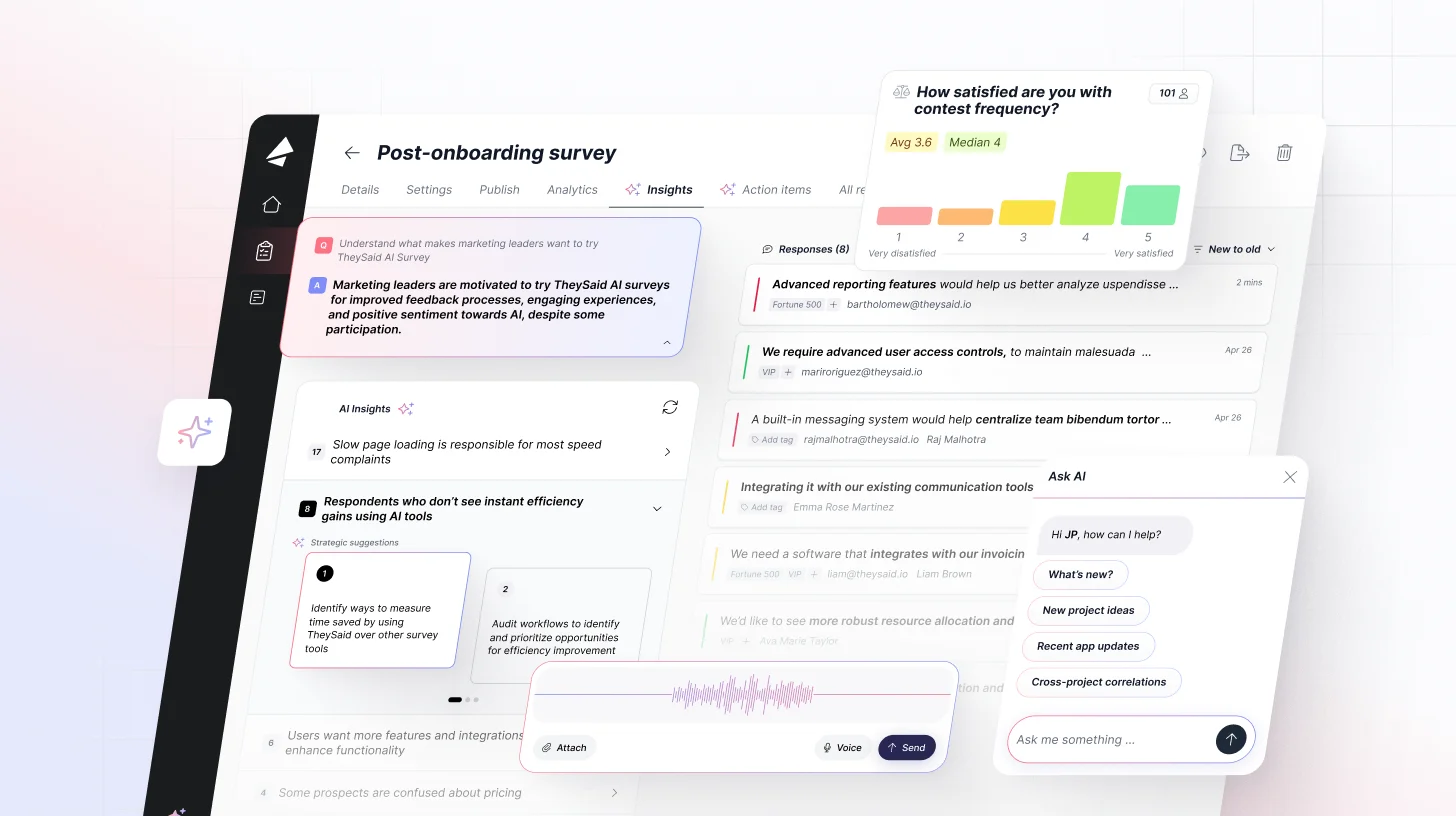 Blog
Blog How to Build AI Brand Tracking Strategies
How to Build AI Brand Tracking StrategiesHow to Build AI Brand Tracking Strategies
AI brand tracking has become the difference between companies that know what customers think and companies that guess.
When someone asks ChatGPT for product recommendations, does your brand appear? When they search Perplexity for industry leaders, are you mentioned? When Google's AI overviews respond to buyer questions, do you get cited?
Smart AI brand tracking answers these questions with data instead of assumptions. It shows you exactly where your brand appears in AI responses, what people say about you, and how you compare to competitors. Most importantly, it gives you the insights needed to improve your position before customers make decisions.
Let's explore how to build AI brand tracking systems that actually work.
What Makes AI Brand Tracking Different
Most companies still track their brands the old way, monitoring search rankings, social mentions, and survey responses. But customers increasingly get answers from AI systems that synthesize information and provide direct answers. If your brand isn't part of those answers, you're invisible to a growing segment of potential customers.
When someone asks an AI system about products in your category, AI brand tracking shows whether your brand gets mentioned, how it's described, and what context surrounds those mentions. It reveals the exact words and phrases AI systems use to describe your brand when customers ask for recommendations.
1. Real-Time AI Brand Monitoring Systems

The Gap Traditional Tools Can't Fill
Traditional tracking methods can't capture how AI systems work.
Search rankings don't matter when customers get direct answers. Social media mentions tell you what people post publicly, but miss the private conversations happening between users and AI assistants. Survey responses show past opinions, not current AI-driven discovery patterns.
AI systems pull information from thousands of sources simultaneously. These systems gather information about your brand from reviews, articles, social posts, and countless other web sources, then combine all that data into single responses. This creates a completely different brand visibility landscape that traditional tools can't measure.
Setting Up Multi-Platform AI Monitoring
Start with the platforms where your customers actually get answers. ChatGPT handles over 1 billion queries daily. Perplexity grows 67% year-over-year in traffic. Google's generative AI overviews appear on up to 84% of search queries. These three platforms should be your monitoring foundation.
Test the same questions across all platforms. Ask "What are the best [product category] brands?" or "Which companies lead in [your industry]?" Run these queries weekly and track how often your brand appears. Document specific context and positioning, not just mentions.
Create a simple tracking spreadsheet with columns for platform, query, date, brand mention (yes/no), position in response, and context. This manual approach helps you understand patterns before investing in automated tools.
Tracking What Actually Matters: Citations vs Mentions
Not all AI brand mentions are equal. Citations include links back to your website and indicate higher authority. Simple mentions acknowledge your brand exists but don't drive traffic or signal trust to AI systems.
Track citation frequency across different types of content:
- Homepage citations - show overall brand authority
- Product page citations - indicate specific solution credibility
- Blog post citations - demonstrate thought leadership and expertise
- Resource page citations - signal comprehensive information value
Which topics generate the most citations? This data shows which content AI systems consider most authoritative and trustworthy.
Monitor the source diversity of your citations. If AI systems only cite one piece of your content repeatedly, you're vulnerable to algorithm changes. Strong brands get cited from multiple pages and content types, showing comprehensive authority in their space.
Building Your AI Brand Visibility Dashboard
Create a weekly dashboard that tracks key metrics across platforms. Include brand mention frequency, citation rate, sentiment of mentions, competitor comparison, and trend direction. Keep it simple - five metrics maximum.
Update your dashboard the same day each week. AI systems change frequently, and consistent timing helps you spot patterns versus one-off fluctuations. Look for trends over 4-6 weeks rather than reacting to daily changes.
Share dashboard insights with your content and marketing teams. When you see declining mentions in specific categories, they can create content to address those gaps. When competitors gain ground, your team can analyze their approach and adapt accordingly.
2. AI-Powered Sentiment and Competitive Analysis

Understanding AI Brand Sentiment Beyond Positive/Negative
AI systems characterize your brand with specific attributes and context, going far beyond simple mentions. Traditional sentiment analysis looks for positive or negative words while AI brand tracking analyzes the complete picture: what problems your brand solves, what customers appreciate, and what concerns come up repeatedly.
Pay attention to qualifying language like "but," "however," and "although" in AI responses. These words reveal perceived trade-offs that shape customer expectations before they visit your website. Track these patterns to understand how AI systems position your brand in the market.
Competitive Intelligence in AI Conversations
Monitor how AI systems position your brand relative to competitors. Do you appear in the same recommendation lists? Are you described as similar to specific competitors or positioned as a unique alternative? This competitive context reveals your perceived market position.
Track competitor mention frequency and context. If competitors consistently appear in AI responses while you don't, analyze their content strategy and online presence. Look for patterns in what makes them citation-worthy versus merely mentioned.
Document competitive positioning language. When AI systems compare brands directly, they often use specific phrases like "more affordable than," "better customer service than," or "less features than." These comparisons influence customer perceptions and purchase decisions.
Predicting Brand Perception Shifts Before They Happen
Watch for early signals in AI responses that indicate changing brand perceptions. If customer service complaints start appearing in multiple AI-generated answers, address the underlying issues before they become widespread perceptions. Monitor emerging competitor threats through AI mentions - new brands that suddenly appear in recommendation lists alongside established players often signal market disruption.
Track the evolution of category descriptions. When AI systems start describing your product category differently, it often predicts market shifts. Categories that get redefined often see new entrants and changing customer expectations, giving you early warning to adapt your positioning.
Turning AI Feedback Into Strategic Advantages
Use AI mention analysis to identify content gaps. If competitors get cited for information you don't provide, create comprehensive content addressing those topics. AI systems favor sources that provide complete, authoritative information.
Analyze the questions that trigger competitor mentions but not yours:
- Product comparison queries - create detailed comparison guides
- How-to questions - develop step-by-step tutorials and guides
- Industry trend questions - publish original research and insights
- Problem-solving queries - offer comprehensive solution frameworks
Create content specifically designed to answer those questions better than existing sources. Focus on depth, accuracy, and unique insights that only your brand can provide.
Monitor successful competitor content formats. If competitors get cited from specific types of pages (comparison charts, how-to guides, research reports), develop similar content that positions your brand more favorably.
3. Optimizing Brand Presence Across AI Platforms

Creating Citation-Worthy Content for AI Systems
AI systems prioritize content that provides direct, factual answers to user questions. Create comprehensive guides that address entire topics rather than superficial overviews, including data, examples, and step-by-step instructions that users can immediately apply. Structure content with clear headings and bullet points since AI systems parse well-organized information more effectively.
Develop original research and proprietary data that only your brand can provide. AI systems value unique information sources and will cite original research more frequently than regurgitated industry insights.
Platform-Specific Optimization Strategies
Each AI platform has different citation preferences:
Building Entity Authority That AI Systems Trust
AI systems need to recognize your brand as a legitimate entity. Keep your brand information consistent across your website, social profiles, review sites, and directory listings. This consistency helps AI platforms understand who you are and what you do.
Demonstrate expertise through detailed explanations, case studies, and thought leadership content. But here's the key - AI systems prefer sources that consistently deliver value over time rather than one-hit wonders.
Build relationships with respected industry publications and experts who can cite your work, since these third-party endorsements signal credibility to AI algorithms.
Measuring ROI From AI Brand Tracking Efforts
Track traffic from AI platforms using UTM parameters and referral analysis. Many AI systems now provide links to sources, and this traffic often converts well because users arrive with a specific intent.
Monitor brand search volume increases following AI mention improvements. When your brand appears more frequently in AI responses, it often drives increased direct brand searches as users seek more information.
Analyze conversion quality from AI-driven traffic. Users who discover your brand through AI recommendations often have higher purchase intent because they've already received a recommendation from a trusted source.
Advanced AI Brand Tracking Tactics
Automate your monitoring once you understand the patterns. Manual tracking works at first, but you'll miss opportunities without alerts that catch mentions quickly across platforms.
Think like your customers when creating test queries. A project management software company should track "best tools for small teams" and "how to improve team productivity" - not just "best project management software." Focus on how people actually ask questions, not how you describe your product.
Watch for indirect mentions too.
Sometimes AI systems reference your ideas or content without naming your brand directly. These "ghost mentions" still shape perceptions and might reveal opportunities to claim credit for concepts you created.
Getting Started With AI Brand Tracking with TheySaid
The companies that master AI brand tracking will understand customer perceptions before traditional metrics catch up. They'll spot competitive threats early and identify opportunities to improve their market position through strategic content and messaging.
Start with manual monitoring of 10-15 key queries across major AI platforms:
- Track your brand mentions weekly on the same day
- Document context and positioning in each response
- Compare your presence to top 3 competitors
- Note which content types get cited most often
Build this into a weekly routine before investing in automated tools. This helps you recognize patterns and choose the right metrics to track long-term.
Also, focus on improving your citation rate rather than just increasing mentions. Citations drive traffic and signal authority to AI systems, creating a positive feedback loop where better citations lead to more frequent mentions.
TheySaid helps businesses build these AI brand tracking systems with survey tools that capture customer sentiment and competitive positioning data. Instead of guessing how AI systems perceive your brand, you get clear insights about where you stand and how to improve.
Ready to understand how AI systems represent your brand to potential customers? Book a demo with TheySaid and see how advanced survey analytics can complement your AI brand tracking strategy.
Key Takeaways
- AI brand tracking measures presence in AI-generated responses, not traditional search results or social mentions
- Citations from AI systems matter more than simple mentions because they drive traffic and signal authority
- Monitor sentiment context and competitive positioning, not just positive/negative brand mentions
- Create comprehensive, well-structured content that answers complete questions rather than superficial overviews
- Track ROI through increased brand searches and higher-quality traffic from AI platform referrals
Frequently Asked Questions
Q: What's the difference between AI brand tracking and traditional brand monitoring?
A: AI brand tracking focuses on how your brand appears in AI-generated responses from platforms like ChatGPT, Perplexity, and Google's AI overviews. Traditional brand monitoring tracks search rankings, social media mentions, and survey responses. AI brand tracking is crucial because customers increasingly get product recommendations and information directly from AI systems rather than searching through multiple sources themselves.
Q: How often should I monitor my brand's presence in AI responses?
A: Start with weekly monitoring of 10-15 key queries across major AI platforms. This frequency helps you spot trends without getting overwhelmed by daily fluctuations. As you become more sophisticated, you can increase frequency or automate monitoring, but weekly manual checks provide the foundational understanding needed to interpret automated data effectively.
Q: Which AI platforms should I prioritize for brand tracking?
A: Focus on ChatGPT, Google AI Overviews, and Perplexity as your starting foundation. ChatGPT handles over 3 billion monthly conversations, Google AI Overviews appear on up to 84% of search queries, and Perplexity shows strong growth in business and research use cases. Add other platforms based on where your specific customers seek information.
Q: How do I measure ROI from AI brand tracking efforts?
A: Track traffic from AI platforms using UTM parameters, monitor increases in direct brand searches, and analyze conversion quality from AI-driven traffic. Users who discover your brand through AI recommendations often have higher purchase intent. Also measure citation frequency improvements and competitive positioning changes over time as leading indicators of future business impact.
Q: What type of content gets cited most often by AI systems?
A: AI systems favor comprehensive, well-structured content that provides complete answers to user questions. This includes detailed guides with clear headings, original research with proprietary data, and authoritative sources that demonstrate expertise over time. Content should be factual, current, and formatted for easy information extraction by AI algorithms.
















.svg)